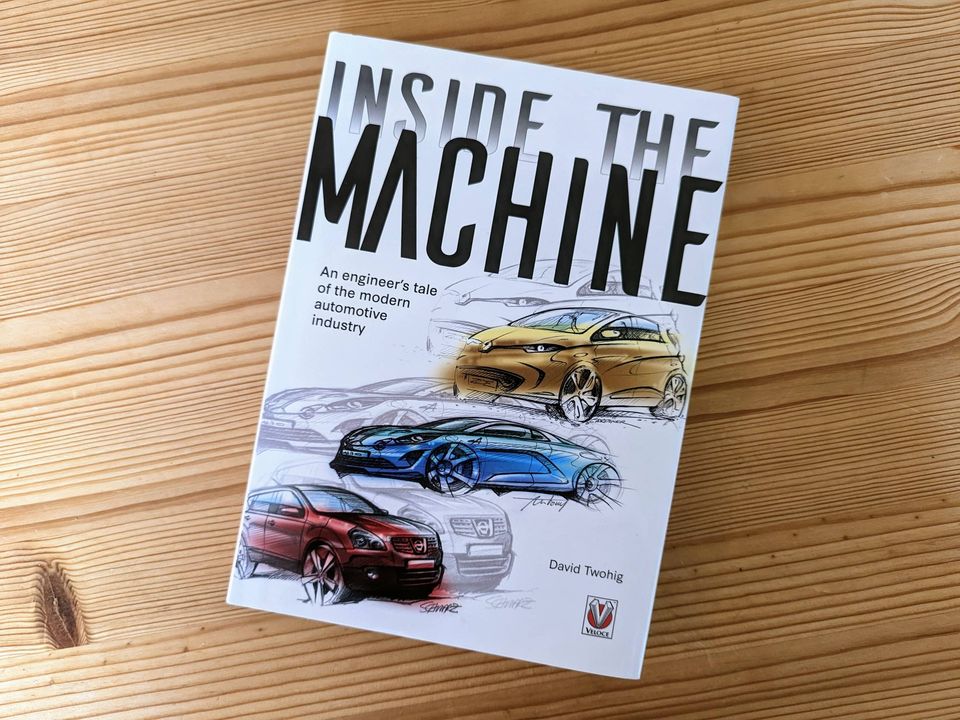Book Review: Inside the Machine by David Twohig

Overview
In this book, the author goes over his career in the automotive industry. From starting as a graduate to leading three different teams, each producing a successful modern car.
The most significant part of the book is about the development of the three cars - the Nissan Qashqai, the Renault Zoe, and the Alpine A110.
Every single one had their challenges and wins:
- Designing the Qashqai when the Crossover SUV body type was not as popular as it is today.
- Building the Zoe when EV technology wasn't generally accepted like today, and few were willing to bet on it.
- Resurrecting an iconic car on a tight budget without having full support.
The book describes the behind-the-scenes stories during the development of each car. The tough decisions, the struggles, and the politics involved.
Engineering Challenges - More, Please!
I enjoyed learning about the various problems that can arise during car development. For example, one of the engineers for the Renault Zoe thought of this possible scenario:
Therefore, the garage could blow up under certain circumstances in that scenario. (The author confirms that Zoe has countermeasures in place to avoid such far-fetched scenarios.)
It was fascinating to read stories like this one. It demonstrates the thoughts and iterations required to ensure the cars are safe.
However, it does bring me to the one "criticism" I have of the book.
When I purchased the book, I thought it would evolve more around these types of stories, i.e. focusing on engineering challenges when developing and building cars.
There are, of course, occasions where the book goes into technical details; nevertheless, coming from an engineering background, I would have wanted a bit more in-depth engineering stories and facts.
Diverse Work Environments
Regardless, I enjoyed discovering the different cultures and work procedures between organizations. Learning about the different philosophies and values was interesting. For instance, when meeting a new coworker at Nissan vs Renault.
People often want to change things when they move between companies with such different environments. But the author's adaptability and leadership skills are admirable.
A great example is when he needs to mix two different teams to work together on the Alpine project. (I'll let you read about that on your own)
The Tough Times
However, it's not all fun and games. The author also talks about the difficult times. The less engaging times between projects, looming deadlines, and making tough personnel choices. Shining a light on those things is valuable.
He talks about the sacrifices, the long hours and a lot of travelling, the not-so-pleasant parts of the job.
We all have parts of our jobs that we don't like. Learning how others deal with these things and what people dislike in different job roles can be beneficial.
Summary
The book is not for you if you want to read in-depth stories and details about technical problems during car development.
Even so, it's a great book to learn about the differences between car manufacturers and how they work. It provides insight into what it takes to be a Chief Vehicle Engineer at one of these companies and what it involves.
I would still recommend this book to those who are more engineering-focused. I found it interesting to learn what happens at the management level and understand what decisions are being made, by whom, and why.
Thank you for reading.
